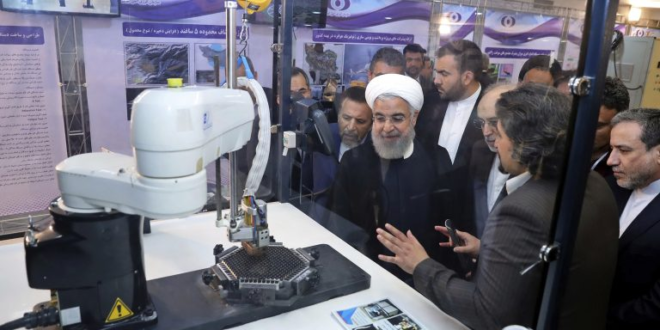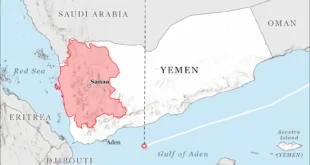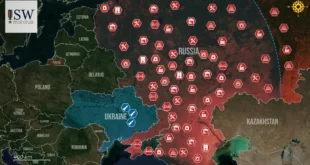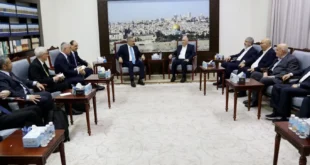A preliminary U.S. defense intelligence assessment of U.S. strikes on Iran’s key nuclear sites raised questions about the Trump policy to prevent Iran from developing a nuclear weapon.
Statements by U.S. and Iranian officials, as well as the International Atomic Energy Agency and Israeli nuclear authorities, however, suggest Iran’s major nuclear sites were severely damaged.
U.S. and Israeli threats to thwart Iranian attempts to reconstitute its uranium enrichment program cast doubts on the durability of the recently announced Israel-Iran ceasefire.
Global officials, as well as members of the Trump team, assert that the only way to permanently assure Iran’s nuclear program is purely peaceful is through a negotiated agreement.
On Tuesday, press reports, apparently based on leaks, cited a classified report by the Defense Intelligence Agency (DIA) assessing the damage caused by the Sunday morning U.S. strike by the B-2-delivered “Massive Ordnance Penetrator” (MOP) on Iran’s nuclear sites at Fordow, Natanz and Isfahan. Isfahan and Natanz were also hit by submarine-launched Tomahawk missiles. The report raised immediate questions about the effectiveness of not only the U.S. strike but also a more than week-long Israeli campaign against those same sites, as well as other strategic Iranian targets. The DIA assessment reportedly concluded – “low confidence” and based on preliminary intelligence data – that the strikes did not destroy the core components of Iran’s nuclear program and probably set its nuclear program back by only several months. U.S. intelligence reports also indicated that Iran moved multiple batches of its highly enriched uranium out of the nuclear sites before the strikes occurred and that the stockpiles were unaffected by the bombing. Doubts about the level of U.S. destruction centered on the enrichment site at Fordow, which is constructed on the side of a mountain, and was targeted by 12 out of the 14 MOPs delivered by U.S. B-2s on Sunday.
The leaked DIA assessment immediately raised questions about whether Trump’s claims that the U.S. strike had “obliterated” Iran’s nuclear sites and had permanently ensured Iran could not develop a nuclear weapon. In a social media post Monday, Trump proclaimed: “The sites that we hit in Iran were totally destroyed, and everyone knows it.” CIA Director John Ratcliffe also released a statement confirming Trump’s claims that Iran’s nuclear program was severely damaged. If the preliminary DIA assessment stands up to further analysis, the survival of Iran’s enrichment sites, as well as its stockpile, casts doubt on Trump’s claim that the U.S. strike had helped end the Israel-Iran conflict and would bring about a durable cessation to hostilities in the region.
Speaking at a NATO summit in The Hague on Wednesday, Trump refuted the DIA assessment as preliminary and incomplete, but at the same time indicated the U.S. would strike Iran again if Iran sought to reconstitute its uranium enrichment efforts. Israeli leaders have warned Iran they will strike them, despite the ceasefire, if it seeks to rebuild its nuclear sites. Despite the warnings, Trump signaled his intent that neither the U.S. nor Israel undertake any new hostilities with Iran, saying at the NATO meeting: “The way I look at it, they (Iran and Israel) fought, the war is done.” He added that the entrances to the nuclear sites struck have become inaccessible, and it is “too dangerous” to move nuclear material in or from them. He also insisted the threat of follow-up U.S. strikes would deter Iranian officials from undertaking any activity at the sites, including rebuilding or removing nuclear material from them. Trump officials appear to want to put the Iran crisis behind them to focus on a settlement of the Ukraine war, a possible agreement to resolve the conflict in Gaza, and U.S. domestic issues.
Trump’s refutation of the DIA report drew some corroboration from non-U.S. actors, including Iran. Outside experts noted the report represented an estimate by one of the many U.S. intelligence agencies and was not a vetted, consensus assessment by the whole U.S. intelligence community. On Wednesday, Iran’s Foreign Ministry spokesman Esmail Baghaei told Al Jazeera: “Our nuclear installations have been badly damaged, that’s for sure.” The Israeli Atomic Energy Commission released a statement saying: “The devastating U.S. strike on Fordow destroyed the site’s critical infrastructure and rendered the enrichment facility inoperable. We assess that the American strikes on Iran’s nuclear facilities, combined with Israeli strikes on other elements of Iran’s military nuclear program, has set back Iran’s ability to develop nuclear weapons by many years.” On Monday, the Executive Director of the IAEA, Rafael Grossi, told an emergency meeting of the agency’s 35-nation Board of Governors that the bombing probably caused “very significant” damage to the underground areas of the Fordow site. He added, however: “At this time, no one, including the IAEA, is in a position to have fully assessed the underground damage [there].”
IAEA chief Grossi also raised an issue that Trump officials have downplayed since the Sunday attack – that permanently ensuring Iran is a non-nuclear state will depend on an agreement that provides for unfettered inspections and monitoring of Iran’s nuclear sites. In his Monday statement to the IAEA Board, Grossi called for IAEA inspectors to be able to return to Iran’s nuclear sites in a bid to “account for” its highly enriched uranium stockpiles. In its May 31, report, the IAEA stated Iran had accumulated 60 percent enriched uranium – enough, if enriched to the 90 percent “weapons grade” level, to manufacture nine nuclear weapons. Since the U.S. strike on Sunday, Grossi has said the IAEA does not know whether reports Iran moved the stockpile out of the Isfahan facility prior to the U.S. attack are accurate or, if so, where the material might be located.
Even as the IAEA and global diplomats called for a negotiated U.S.-Iran nuclear agreement, the Israeli and U.S. strikes clouded prospects for diplomacy. On Tuesday, Iranian Foreign Minister Abbas Araghchi reiterated Iran’s refusal to verifiably end its enrichment of uranium – the same stumbling block that prevented five rounds of U.S.-Iran talks during April and May from producing an accord. Araghchi criticized the Nuclear Non-Proliferation Treaty (NPT) for failing to protect Iran’s peaceful nuclear program and threatened that Iran might end its cooperation with the IAEA. On Wednesday, Iran’s elected Majles (parliament) approved a bill to suspend cooperation with the IAEA, according to Iranian state media. The bill, which must be approved by Iran’s unelected 12-person Guardian Council to become law, stipulates that any future inspection by the IAEA would need approval by the Supreme National Security Council. The Council is the country’s top foreign policy decision-making body, whose members are appointed by Supreme Leader Ali Khamenei. Majles Speaker Mohammad Baqer Qalibaf was quoted by state media as also saying Iran would accelerate its civilian nuclear program – a threat seeming to elevate the potential for further hostilities with Israel and/or the U.S.
Acknowledging the benefits of a nuclear agreement, Trump’s team has openly called on Iran to return to the negotiating table, while at the same time indicating Iran’s leverage is limited. Trump told reporters at the NATO summit that he wasn’t particularly interested in restarting negotiations with Iran, insisting that U.S. strikes had destroyed its nuclear program. He sought to appear ambivalent about forging a pact with Iran, saying: “We may sign an agreement, I don’t know.” However, his Special Envoy for the Middle East Steve Witkoff, the chief negotiator with Iran, told journalists Trump is now looking to land “a comprehensive peace agreement that goes beyond even the (Israel-Iran) ceasefire.” He added: “We’re already talking to each other, not just directly, but also through interlocutors,” and said the U.S. is “…hopeful that we can have a long-term peace agreement.” Reflecting the hope for a diplomatic breakthrough, facilitated by the U.S. and Israeli bombardment, Trump seemed to contradict his earlier comments at the NATO summit by telling reporters, “We’re gonna meet with them (Iranian officials),” saying U.S.-Iran talks would resume as early as next week. The prospects for the ceasefire that Trump compelled Israel and Iran to accept – and for enduring stability and calm in the Middle East region – might depend on the outcome of those talks.
 Eurasia Press & News
Eurasia Press & News




